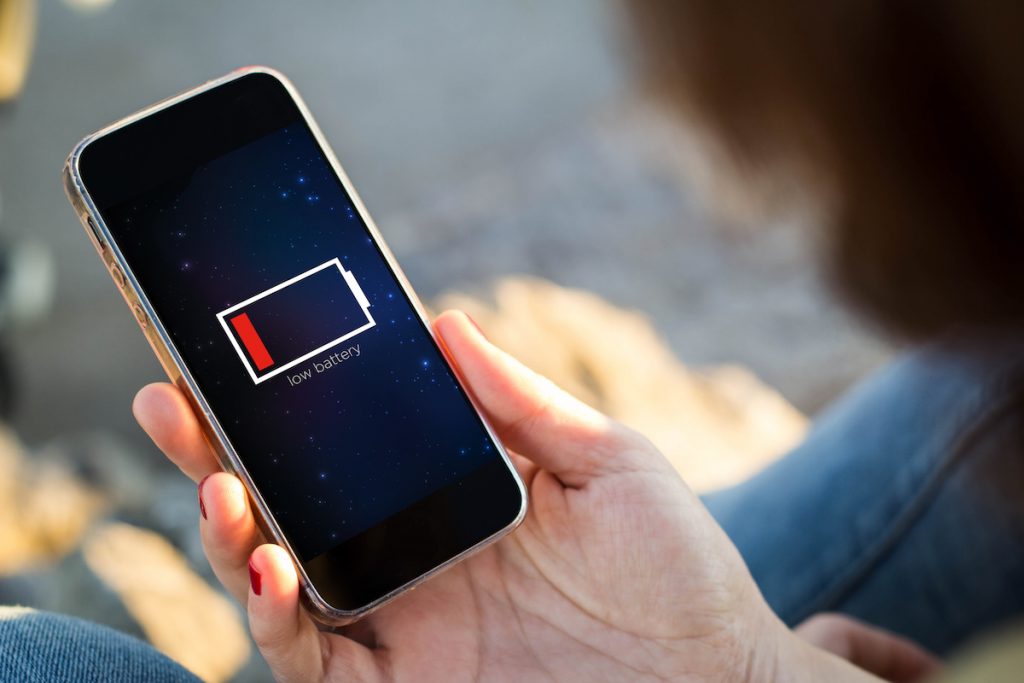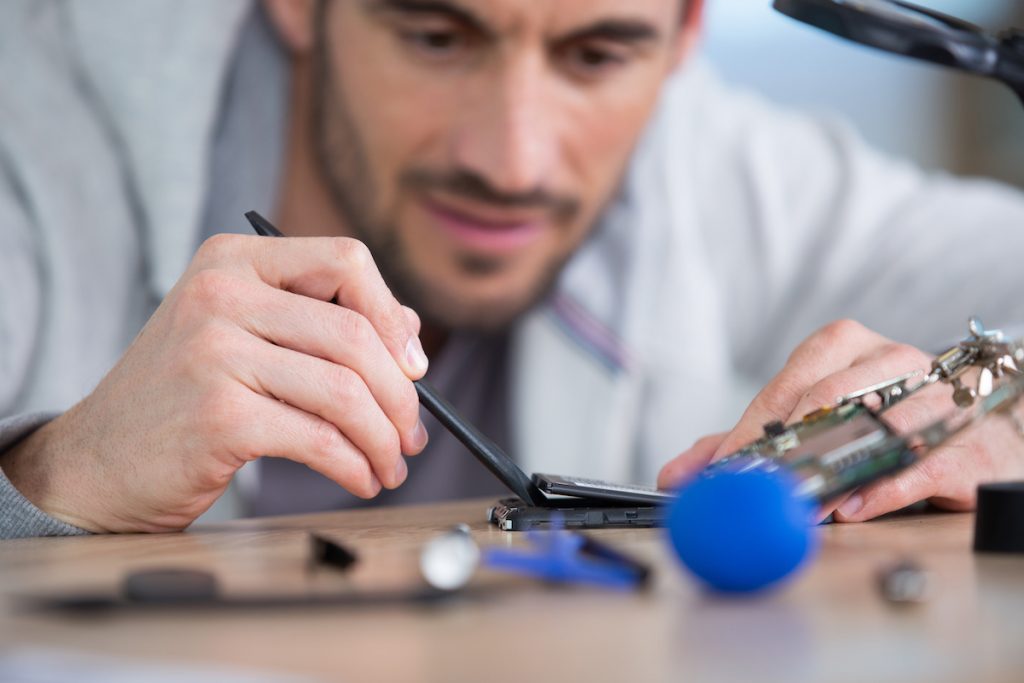We are distributors of
Cell Phones
that are used, tested, graded, and ready for resale.
HOW LONG DO SMARTPHONES LAST? PLUS 5 WAYS TO EXTEND LIFESPANS
Arthur Bronfman / June 2, 2022
Smartphone manufacturers will often tell you how many hours of battery life their phones can offer, but how long do smartphones last overall? The longer a smartphone’s lifespan lasts, the wiser your purchase decision will be.
Not sure where to begin? Don’t worry. This article will look at the average lifespan of smartphones, how phones from different brands fare, factors that impact cell phone life, tips to extend it, and more.
How Long Does a Smartphone Last on Average?
The average lifespan of smartphones is between 2.5-3 years, with some lasting longer than four years. This range is subject to various factors, but the primary ones are battery life, usage, and software.
Smartphones use rechargeable batteries that degrade with time. Each battery has a limited battery cycle count, and once the battery crosses that count, its capacity to hold charge depletes considerably. So even if you maintain your smartphone well, the battery will eventually degrade.
What Is a Battery Cycle?
A complete battery cycle or charge cycle is when you deplete all of the battery’s power. You could complete a cycle in many ways—a basic example is if your phone’s charged to 100% and you use it till it discharges fully (0%).
Or, suppose you used your phone until it discharged from 100% to 50% in one day and then recharged it fully. The following day, if you discharged it to 50%, it would mark the completion of an entire battery cycle. It’s not uncommon for mobile phones to take a few days to complete a full cycle.
All smartphones use lithium-ion batteries, known for their high energy density (more battery life in a compact space), and offer 300 to 500 cycles. Phones with larger battery capacities will naturally have longer individual charge cycles, extending their lifespan. Battery size plays an essential role in a device’s lifespan, which is why wireless earbuds don’t last beyond 1.5 to 3 years.
How Long Do Smartphones Last: Brand Comparison

The smartphone market is saturated, so consumers have many options. Although the average lifespan of smartphones is 2.5 to 3 years, this figure varies from one brand to another. Let’s take a look at some brands below.
Apple: 4 to 7 Years
Apple’s iPhone is arguably the best smartphone in the market — no wonder the average lifespan of an iPhone’s four years, with some lasting up to seven years or slightly more. Even after 500 battery cycles, the maximum charge capacity of the iPhone battery decreases only by 20%.
But that’s not the only reason why Apple’s smartphones last long compared to other Android phones. Across all models, Apple rolls out iOS software updates for seven years after the release, dramatically increasing the life of its smartphones. Software updates increase a phone’s lifespan because they fix bugs and crashes, enhance security, and optimize the device’s energy consumption.
Samsung: 3 to 6 Years
Samsung’s smartphone batteries offer 400 to 500 battery cycles, so these phones can last between 3 to 6 years.
Samsung smartphones manufactured before 2019 will receive only two years of Android updates, but the company announced that smartphones made after 2019 would receive three years of Android updates and four years of security updates.
You can expect the higher-end smartphones, like the Samsung Galaxy and Samsung Note, to easily last 3 to 4 years. They could last up to six years, but they won’t be running the latest software.
Google: 3 to 5 Years
Like the other major smartphone brands, Google’s smartphones also have 500 battery cycles, so you can enjoy great battery life for at least 1.5 to 2 years. Google only offers three years of Android and security updates, except for the Pixel 6 and Pixel 6 Pro, which will receive five years of security updates
Depending on the model, you can expect your Google smartphone to last 3 to 5 years.
Xiaomi: 2 to 4 Years
Xiaomi’s phones have 400 to 500 battery cycles, and you can expect these models to last 2 to 4 years. But they’re likely to get buggy because the models launched before Q3 2021 will get only two years of Android and three years of security updates.
Like Samsung’s phones, the models manufactured after Q3 2021 will receive three years of Android support and four years of security updates. The post Q3 2021 models could last you 3 to 5 years.
Factors That Impact Smartphone Lifespan

The battery life and battery cycle are essential factors that impact a phone’s lifespan, but there are more aspects we’ll look at below.
1. Physical Damage
This is obvious — phones can get severely damaged from falling on hard surfaces. Often, a hard fall can crack a smartphone screen. If it’s a tiny scratch or two, you could continue using the phone without issues. But if a good portion of the screen shatters, you’ll need to replace the screen.
Sometimes, there may be no visible damage from a fall on the outside, but there could be internal damage. Internal issues can manifest in many ways — lowered touchscreen response, decreased camera functionality, or worse, a damaged motherboard that can lead to malfunctions.
2. Extreme Temperatures
Subjecting your smartphone to extreme temperatures can cause short-term and long-term damage. It’s not uncommon for phones to turn off abruptly in cold temperatures (below 32º F). If you’re using the phone in hot temperatures (above 95º F), the device’s display may dim or turn off, and the performance could be reduced to control the internal temperature.
But when the smartphone is regularly subject to extreme temperatures, it causes long-term damage, like poor battery life and performance.
3. Lack of Software Support
Even if your phone’s hardware is working fine, your device’s operating system isn’t optimized without the latest software. A poorly optimized device will slow down, have reduced battery life, and could have security problems too. But this factor depends on your phone’s brand, since manufacturers have their timelines for providing software support.
How Do You Extend the Lifespan of Smartphones?
It doesn’t take much to extend the lifespan of your smartphone, and you’ll agree once you’ve read the points below.
1. Good Charging Habits
Maintaining good charging habits is simple. For starters, don’t leave your phone charging overnight.
Next, avoid charging it to 100% because holding all that charge increases mechanical tension in the smartphone battery and lowers its ability to retain power. Keep it charged between 40% to 80%.
In terms of charging frequency, it’s best to charge lithium-ion batteries in brief intervals. So rather than charging from 0 to 100% at once, it’s better to do 5 or 10% charges now and then. Most importantly, don’t let the phone battery discharge completely because that’ll lower the battery’s overall life too.
You’ll also want to keep the charging port clean because your device may not charge if it gets clogged with dust. You can use a can of compressed air or a bulb syringe to clean out the port.
2. Optimized Battery Usage
This is like turning off the lights when you leave a room — don’t leave apps running on your phone if you’re not using them, especially performance-intensive apps, like graphic-heavy games or video editing apps.
If you’re not using Bluetooth and Wi-Fi, turn them off, but if you can choose between cellular data and Wi-Fi, stay on Wi-Fi because it consumes less power. Remember to turn off push notifications and location tracking on apps when they’re not needed.
Lastly, turn off your personal hotspot when you’re not using it.
3. Latest Software
With the latest software on your smartphone, you’ll enjoy optimized battery usage, smarter utilization of the device’s resources, enhanced security, and a brilliant user experience. The updates will also fix bugs and crashes.
4. Physical Protection
It’s challenging to prevent this completely, but try not to drop your phone. The standard safety measures are getting a robust case (preferably non-slip) and installing a screen protector.
While holding the phone, two hands are better than one, especially if you’re outdoors or around people who may bump into you. It’s safe not to use your phone in places with slick floors, like the bathroom, because you might slip and drop the phone on the floor.
You’ll want to be extra cautious around bodies of water. Most high-end phones are water-resistant (not waterproof), so you can submerge them to shallow depths for short periods (30 minutes). But cross that range, and you’ll risk causing water damage to your device.
People can trip on charging cables and hurt themselves (and the phone), so place your charger and phone in a spot where people won’t have to walk over the cable.
And when it comes to carrying your phone around, don’t put it in your pocket unless it fits in securely. Pockets with zippers are ideal, but avoid tiny pockets that’ll make your phone stick out.
5. Right Temperatures
It’s best to use your smartphone in ambient temperatures of 32º to 95º F. Never leave your phone in the car on hot days, and avoid placing it in hot spaces, like a window that gets plenty of sunlight, or frigid places, like the freezer.
How Long Do Refurbished Smartphones Last?

Refurbished smartphones will last as long as new devices, but it primarily depends on when you bought the phone and its release date.
Refurbished phones are used devices that are completely repaired and put through extensive quality checks to function like brand-new phones. These devices have their data wiped, customizations removed, software updated, and physical damages repaired. If the quality of the phone’s replaceable battery has diminished, then a new battery is inserted to get the phone back up and running.
Unlike second-hand phones that individuals sell, refurbished phones are repaired, tested, and sold by the manufacturer or a retailer. You’ll find that popular smartphone brands, like Apple, provide refurbished iPhones in their stores and even have trade-in programs for old phones.
Based on the quality of repairs, there are several refurbished grades among these phones, but internally, they’ll all perform properly — no changes to the specs.
A refurbished phone is more affordable than a new one, but it performs like a new device and comes with a warranty.
Why Should You Use Refurbished Smartphones?
Refurbished smartphones last between 2.5 to 3 years or more, but they’re a more environmentally friendly option compared to buying a new smartphone. Since 2014, manufacturers have sold over 1 billion smartphones every year. Most people can’t imagine the resources needed to manufacture these devices — copper, lithium, tellurium, cobalt, manganese, and many other minerals and metals.
One part of the problem’s the extraction process itself, but device disposal further adds to environmental degradation. Only a tiny portion of electronic waste is recycled, while the majority is dumped in landfills or burnt.
Refurbishing phones and using them is a way to reduce the environmental impact of manufacturing the phones. By opting for refurbished phones, we promote environmental sustainability. All major smartphone brands offer refurbished options, so refurbished Samsung phones or OnePlus devices won’t be hard to find.
Good Usage Habits Will Make Your Phone Last
The average smartphone will last between 2.5-3 years, but with excellent usage habits, you can extend your device’s life to 4-7 years.
To make your smartphone last longer, practice battery-friendly charging, optimized battery usage, using the latest software, and ensuring protection from extreme temperatures and physical damage.
Refurbished phones can perform and last as long as new phones but are cheaper and more environmentally friendly. If you want to purchase an excellent refurbished smartphone for a reasonable price, send us a quick message today. We’ll work with you to offer a quote for the smartphones that fit your wallet.



